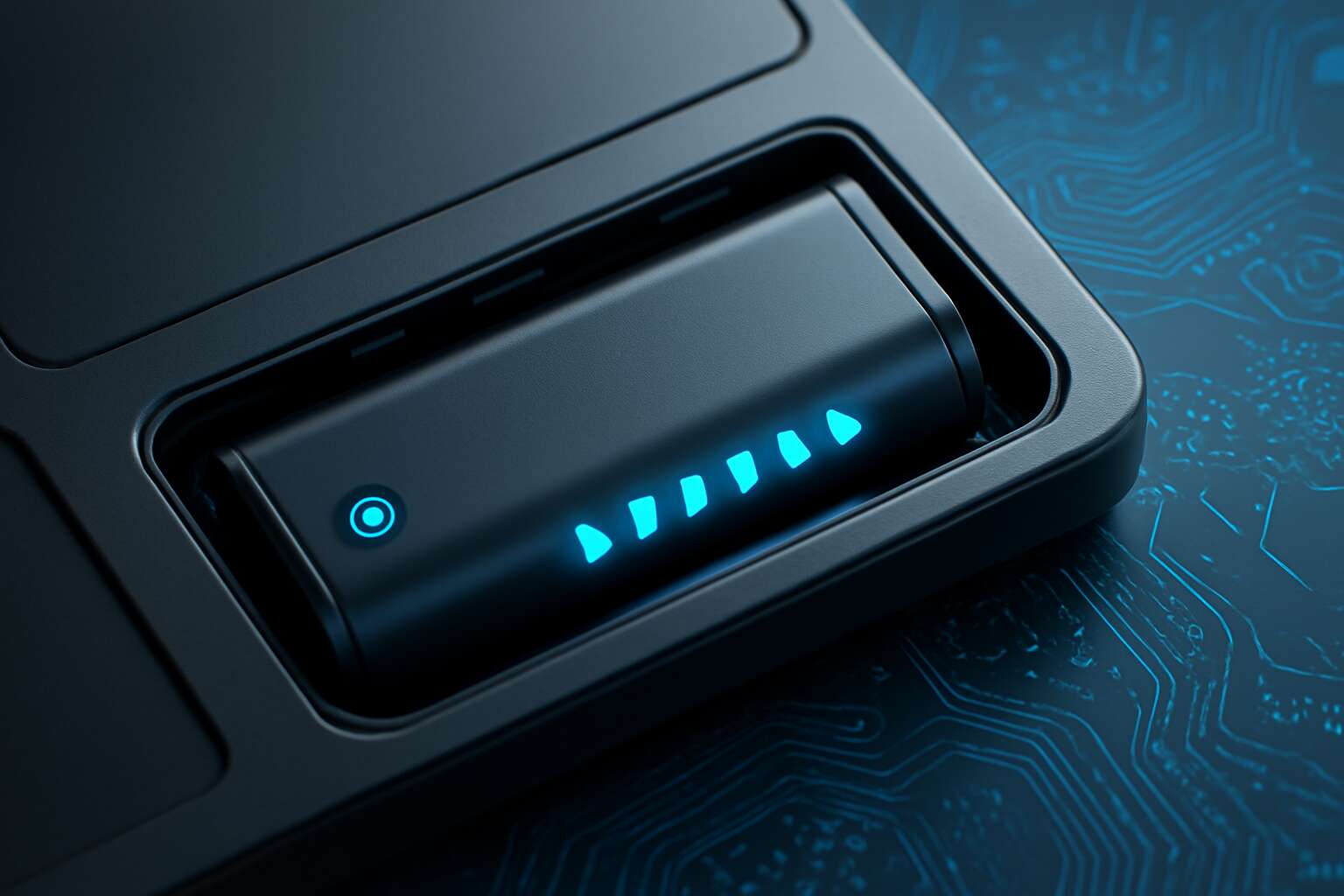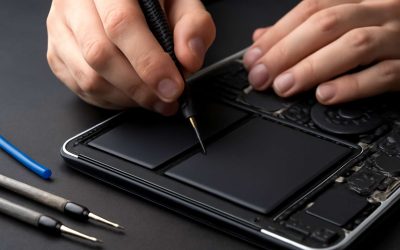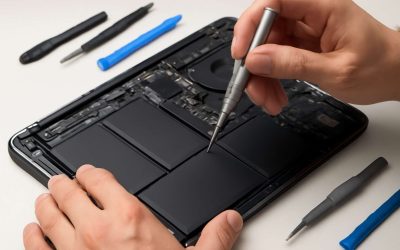Understanding Laptop Battery Technology
Types of Laptop Batteries – Exploring Lithium-ion, Lithium-polymer, and emerging battery technologies
Understanding the intricacies of laptop battery technology can seem daunting, but it’s essential for anyone looking to extend their device’s lifespan. The most common type of laptop battery techie relies on is lithium-ion, renowned for its high energy density and longevity. These batteries power most modern laptops, offering a balance of weight, capacity, and rechargeability that makes them a staple in portable tech.
Another popular choice is lithium-polymer batteries, which are prized for their flexible form factors and improved safety features. Unlike traditional lithium-ion cells, lithium-polymer batteries are encased in a gel-like electrolyte, allowing for slimmer designs and innovative shapes. Emerging battery technologies, like solid-state batteries, promise even greater energy density and faster charging times—pushing the boundaries of what a laptop battery techie can expect from future devices.
For those passionate about laptop batteries, understanding these different types—ranging from lithium-ion to cutting-edge innovations—helps make better choices, whether upgrading or troubleshooting. Each technology offers unique advantages that influence performance, safety, and efficiency, making it a fascinating field for the laptop battery techie eager to stay ahead of the curve.
How Laptop Batteries Work – An overview of battery chemistry and energy storage mechanisms
Understanding how laptop batteries work unlocks a world of insights into their performance and longevity. At their core, these batteries rely on intricate chemical reactions that store and release energy through controlled electrochemical processes. The primary mechanism involves the movement of ions between electrodes—typically an anode and cathode—separated by an electrolyte. When the laptop is in use, lithium ions travel from the anode to the cathode, generating an electric current that powers your device. During charging, this process reverses, restoring energy to the battery.
For the laptop battery techie, grasping these fundamental energy storage mechanisms is essential. It allows for a deeper understanding of why certain batteries outperform others and how innovations like solid-state technology aim to enhance efficiency. Whether troubleshooting or considering an upgrade, knowing the chemistry behind these power sources offers valuable perspective. After all, every lithium-ion cell or lithium-polymer battery is a complex marvel of modern engineering, rooted in these sophisticated chemical dances that keep our laptops alive and kicking.
Battery Capacity and Voltage – What specification metrics influence performance
Understanding the intricate dance of laptop battery technology reveals the secrets behind exceptional device performance. One of the most vital specifications that influence a laptop’s endurance is battery capacity, typically measured in watt-hours (Wh) or milliampere-hours (mAh). These metrics serve as the heartbeat of the battery, dictating how long your laptop can run before a recharge is needed. Higher capacity generally means longer usage—an essential trait for those who rely on their devices throughout busy days or remote adventures.
Voltage, on the other hand, reflects the electrical potential of the battery. It’s a crucial factor because it affects how efficiently power is transferred within the device. Most laptops operate on a standard voltage range, but variations can impact compatibility and overall performance. For the laptop battery techie, understanding how capacity and voltage interplay unlocks a deeper appreciation of why some batteries outlast others and how innovations are pushing boundaries.
In the realm of energy storage, the specifications of a battery—like capacity and voltage—are more than numbers; they are the pulse that keeps your digital world alive. Whether troubleshooting or contemplating an upgrade, these metrics provide the insights needed to select the perfect power source for any laptop adventure.
Latest Innovations in Laptop Battery Tech
Advancements in Battery Chemistry – Solid-state batteries, high-capacity materials
In the realm of laptop battery techie innovations, the dawn of solid-state batteries heralds a new era of power and safety. These cutting-edge power sources replace the traditional liquid electrolytes with solid materials, resulting in batteries that are not only more durable but also boast higher energy densities. Imagine a future where your laptop’s battery is lighter, longer-lasting, and less prone to overheating—this is the promise of solid-state technology.
Advancements in battery chemistry have also unlocked the potential of high-capacity materials. Researchers are exploring novel compounds such as lithium-silicon and lithium-metal, which can significantly boost the capacity and voltage of laptop batteries. These innovations mean more hours of productivity and fewer charging interruptions, a boon for the modern digital nomad.
For the laptop battery techie, staying abreast of these breakthroughs is essential. As the landscape evolves, the integration of solid-state batteries and high-capacity materials will redefine what’s possible in portable power. The quest for the perfect battery continues, fueled by ingenuity and an unyielding desire to push the boundaries of energy storage.
Fast Charging Technologies – Power delivery improvements for quick recharge
Fast charging technologies are transforming the way we power up our laptops—no more waiting around for hours to get back to work or play. For the laptop battery techie, this innovation is a game-changer, delivering rapid power delivery that minimizes downtime and maximizes productivity. Imagine plugging in your device and having enough juice for a couple of hours in just 15 minutes—sounds like magic, but it’s now a reality.
Recent breakthroughs in power management circuitry and electrode design have paved the way for ultra-fast charging capabilities. These advancements use smarter algorithms and better thermal management to prevent overheating and extend battery lifespan. It’s a delicate dance of balancing speed with safety, and the latest tech in this field is performing flawlessly.
To keep pace with these rapid developments, the laptop battery techie must stay updated on emerging power transfer standards. Here’s a quick rundown of cutting-edge fast charging innovations:
- Increased wattage output for swift recharges
- Enhanced thermal regulation mechanisms
- Smart charging algorithms that adapt to usage patterns
Ultimately, fast charging isn’t just about convenience; it’s about redefining portable power in the modern era. Whether you’re a digital nomad or a busy professional, these innovations ensure your laptop is ready when you are, without sacrificing battery health or safety. The future of laptop battery techie is electric—literally!
Battery Management Systems – Smart tech for prolonging lifespan and safety
In the ever-evolving realm of laptop battery technology, the latest innovations in battery management systems (BMS) are nothing short of revolutionary. These intelligent systems serve as the vigilant guardians of your device’s power, meticulously orchestrating the delicate balance between performance, lifespan, and safety. For the laptop battery techie, this means harnessing smarter algorithms that continuously monitor temperature, voltage, and current—ensuring each charge is optimized and every cycle extends the battery’s longevity.
Recent advances have introduced adaptive BMS that dynamically respond to usage patterns, adjusting charging rates to prevent overstress. These systems often incorporate ultra-smart thermal regulation mechanisms, which dissipate heat more effectively, reducing wear and tear. As a result, batteries not only last longer but also operate more safely, even under demanding conditions.
- Real-time diagnostics that identify potential issues before they escalate
- Enhanced protection circuits to prevent overcharging and overheating
- Integration with device firmware for seamless power management
For the laptop battery techie, staying abreast of these emerging battery management innovations is crucial. They are the unsung heroes that quietly prolong your device’s vitality, ensuring that every recharge is a step toward a more sustainable, resilient power future.
Battery Optimization for Laptops
Extending Battery Life – Best practices for maximizing usage
In the realm of the modern laptop battery techie, optimizing battery life isn’t merely a matter of habit; it’s an art form. With South Africa’s ever-fluctuating power grid, mastering these techniques ensures your device remains a steadfast companion rather than a fleeting shadow. The secret lies in understanding that every percentage of battery saved extends your productivity and preserves your investment.
Smart usage practices can dramatically extend battery life. For instance, dimming your screen brightness—often the largest power drain—can save hours of usage. Likewise, closing background applications and disabling unnecessary Wi-Fi or Bluetooth connections when not in use reduces energy consumption. For those who wish to delve deeper, employing power-saving modes tailored for your operating system transforms your laptop into a paragon of efficiency.
- Adjust screen brightness manually or via quick toggle.
- Disable unused wireless features like Bluetooth and Wi-Fi.
- Switch to power-saving mode during extended unplugged periods.
- Keep your operating system and drivers updated for optimal power management.
In the end, a savvy laptop battery techie recognizes that small adjustments—made consistently—can lead to monumental gains in battery longevity. It’s a delicate dance of technology and discipline, ensuring your device remains a reliable partner long after the initial charge.
Battery Calibration Techniques – Ensuring accurate power level readings
Battery calibration is the silent guardian of your laptop’s longevity, a crucial practice for the true laptop battery techie. Over time, inaccurate power level readings can deceive you, causing unexpected shutdowns and diminishing your device’s lifespan. Calibration restores the harmony between the battery’s actual capacity and its displayed charge, ensuring you’re never caught off guard during critical moments.
To calibrate your laptop battery effectively, start with a full charge until 100%, then use your device normally until it completely discharges. Repeating this cycle periodically helps maintain precise capacity readings. For those who want to delve deeper, a more advanced method involves discharging the battery to a specific low level and then performing a full recharge without interruption. This process resets the battery’s internal sensors, a vital skill for the dedicated laptop battery techie.
- Charge your laptop to full capacity and keep it plugged in for a few hours.
- Unplug and let the battery drain naturally until the device shuts down.
- Reconnect the charger and allow the battery to recharge to 100% without interruption.
Mastering these calibration techniques not only enhances the accuracy of your battery’s power level readings but also fosters a deeper understanding of your device’s energy stewardship. For the laptop battery techie, it’s an act of respect—honoring the silent, often overlooked component that keeps your digital life alive amidst South Africa’s unpredictable power grid. Such precision ensures that your device remains a reliable partner, ready to serve with unwavering fidelity.
Managing Power Settings – Optimizing OS and hardware configurations
Managing power settings effectively is the backbone of a well-optimized laptop battery. In South Africa, where power stability can be unpredictable, understanding how to tweak your OS and hardware configurations makes all the difference. A laptop battery techie knows that simple adjustments—like dimming the screen brightness or enabling power-saving modes—can significantly extend battery life.
Most modern operating systems come with built-in tools designed for this purpose. For example, Windows offers a “Battery Saver” mode, which limits background activity and reduces resource consumption. MacOS users can utilize “Energy Saver” preferences to fine-tune performance. But beyond software, hardware settings—such as disabling Wi-Fi when not in use or adjusting CPU performance—are equally critical.
To streamline this, consider implementing an
- automatic shutdown schedule
- customized power plans
tailored to your daily routine. Such configurations empower the laptop battery techie to maximize efficiency, ensuring your device remains reliable even during prolonged power outages. Ultimately, managing power settings is about respecting your device’s energy capacity—especially vital in regions where power fluctuations are commonplace. It’s a subtle art, but one that keeps your digital life running smoothly and your battery healthier for longer.
Troubleshooting Common Laptop Battery Issues
Battery Drain and Shortened Life – Identifying causes and solutions
Laptop battery techie insights reveal that battery drain and shortened lifespan are common frustrations. Excessive power consumption often stems from background apps, outdated drivers, or aggressive power settings. These issues can cause rapid battery drain, leaving users stranded without warning. Identifying the root cause requires a keen eye—monitoring processes, checking for rogue applications, and ensuring firmware is up to date are crucial steps.
Shortened battery life may also be linked to aging cells or thermal stress. Over time, batteries lose their ability to hold charge, making regular calibration vital. Additionally, temperature extremes accelerate chemical degradation, which a laptop battery techie knows well. Maintaining optimal operating conditions, like avoiding prolonged heat exposure, can extend battery longevity.
Sometimes, hardware faults or faulty power management systems are culprits. In such cases, a thorough diagnostic from a skilled laptop battery techie can pinpoint the issue. Whether it’s replacing worn-out cells or recalibrating power management, understanding these common issues helps users regain reliable performance without replacing their entire device.
Battery Not Charging – Diagnosing hardware and software problems
Encountering a laptop that refuses to charge can be more than just a minor annoyance; it’s a signal that underlying hardware or software issues are at play. As a seasoned laptop battery techie, I often see users caught off guard by this frustrating problem. One of the first steps in troubleshooting a battery not charging is to scrutinize both the power supply and the device’s internal components. Sometimes, a simple reboot or reconnecting the power adapter can resolve the issue, but persistent problems demand a more thorough investigation.
Common culprits include faulty charging ports, damaged power cables, or outdated BIOS firmware. It’s crucial to check the device’s power management settings, which might have been inadvertently altered. If these steps don’t resolve the issue, a meticulous diagnostic from a laptop battery techie can reveal deeper faults. These might involve worn-out battery cells or a malfunctioning charging circuit. In some cases, replacing the battery or repairing the power management system restores functionality—saving users from the costly ordeal of a complete device replacement.
Understanding the nuances of hardware and software interplay is vital. For instance, an improperly calibrated battery can sometimes appear to refuse charging altogether. Yet, with the right tools and expertise, a laptop battery techie can diagnose whether the root cause is a hardware fault, software glitch, or a combination of both—ensuring users regain a reliable, long-lasting power source without unnecessary upheaval.
Swollen or Damaged Batteries – Safety concerns and replacement advice
Swollen or damaged laptop batteries are more than just an eyesore; they pose serious safety hazards that demand immediate attention. When a battery begins to bulge, it’s akin to a silent warning—an internal storm brewing within the sleek exterior. These swelling batteries can compromise the integrity of your device, risking leaks, fires, or sudden power failures. As a trusted laptop battery techie, I’ve seen firsthand how dangerous neglect can be.
Replacing a swollen battery isn’t just about restoring performance; it’s about safeguarding your safety. A professional diagnosis can determine if the internal cells have degraded or if the outer casing has been compromised. Never attempt to puncture or force out a damaged battery—these actions can unleash harmful chemicals or ignite a dangerous reaction. Instead, seek expert advice from a laptop battery techie who can efficiently and safely handle the replacement process.
In South Africa, where power surges and fluctuating voltages are common, ensuring your battery’s health is crucial. Regular inspections by a skilled laptop battery techie can spot signs of damage before they escalate. Remember, a swollen or damaged battery isn’t just a malfunction—it’s a potential threat waiting to happen.
Choosing the Right Laptop Battery or Replacement
Compatibility Considerations – Matching battery specs with your device
Choosing the right laptop battery or replacement isn’t merely a matter of matching size; it’s an intricate dance of compatibility and precision. A laptop battery techie understands that the key to seamless performance lies in aligning the battery’s specifications—such as voltage, capacity, and connector type—with the unique architecture of your device. When these elements harmonize, your laptop’s energy symphony plays without a hitch, ensuring longevity and reliable power delivery.
For optimal compatibility, consider the following essential factors:
- Model-specific battery design
- Manufacturing standards and certifications
- Original equipment manufacturer (OEM) versus third-party replacements
A seasoned laptop battery techie knows that selecting a battery with matching specs isn’t just about performance—it’s about safeguarding your device’s health and longevity. Precision in these choices creates a resilient powerhouse that keeps you connected, productive, and inspired—no matter where your journey takes you.
OEM vs. Aftermarket Batteries – Pros and cons
Choosing the right laptop battery or replacement is a nuanced process that demands more than just a quick glance at the price tag. A laptop battery techie knows that selecting between OEM and aftermarket batteries can significantly impact your device’s performance and longevity. OEM batteries, crafted by the original manufacturer, often promise perfect compatibility and a reliable lifespan. They adhere to strict manufacturing standards, ensuring that every volt and connector aligns perfectly with your device.
On the other hand, aftermarket batteries can offer cost-effective alternatives. However, their quality varies widely—some deliver comparable performance, while others might compromise safety or durability. It’s essential to weigh the pros and cons carefully, considering factors like warranty, certification, and user reviews.
Ultimately, a seasoned laptop battery techie will advise that choosing the right battery isn’t just about immediate power needs; it’s about safeguarding your device’s health and ensuring consistent, long-term performance.
Where to Buy Reliable Laptop Batteries – Trusted vendors and warranty tips
In the vast realm of portable power, where every watt whispers potential and every charge breathes life into your device, choosing the right laptop battery or replacement becomes an art as much as a science. For the South African user, navigating this labyrinth demands more than mere instinct; it calls for the seasoned insight of a laptop battery techie—an expert who perceives the subtle nuances of performance and longevity. Where to buy reliable laptop batteries? The answer lies in trusted vendors who stand behind their products with warranties that speak of confidence and quality assurance. A genuine battery, backed by a reputable supplier, ensures compatibility and peace of mind, safeguarding your investment amidst the unpredictable terrain of the tech marketplace.
Sometimes, the allure of affordability beckons—yet, a discerning laptop battery techie recognizes that not all aftermarket batteries are created equal. To avoid pitfalls that compromise safety or performance, look for vendors that offer clear certification and generous warranty terms. For a seamless experience, prioritize those with positive user reviews and transparent return policies. Remember, your device’s health hinges on the battery’s integrity, making the selection process a critical chapter in your technological journey. In the end, whether OEM or aftermarket, the quest remains the same: secure a power source that fuels your ambitions and preserves your device’s vitality for countless journeys ahead.
Future Trends in Laptop Battery Technology
Emerging Materials and Chemistries – Graphene batteries, beyond lithium
In the shadowed corridors of technological evolution, the future of laptop battery techie ventures beyond the familiar glow of lithium. Emerging materials whisper promises of a new dawn—where graphene batteries could redefine energy density and longevity. These atom-thin marvels offer a tantalizing glimpse into a realm where power surges silently beneath sleek exteriors, their potential nearly limitless.
Meanwhile, scientists are venturing beyond lithium, exploring chemistries that conjure durability and rapid recharge capabilities previously thought impossible. Imagine a world where your laptop’s heartbeat is sustained by advanced chemistries—each pulse more potent, more enduring than the last. Such innovations could usher in an era where battery lifespan and safety are no longer a gamble but a certainty, thanks to the relentless pursuits of the laptop battery techie.
- Graphene batteries—ultra-fast charging, lightweight, and highly conductive.
- Beyond lithium—new chemistries like sodium-ion and solid-state variants, promising safer and more sustainable energy storage.
As these emerging materials take center stage, the landscape of battery technology becomes a labyrinth of possibilities, each more intriguing than the last. For the modern laptop battery techie, these developments whisper secrets of a future where power is not just stored but harnessed with artistry and precision—a symphony of science and innovation echoing through the darkened halls of tomorrow’s technology.
Integration with Renewable Energy – Recharging with solar and other green sources
The future of laptop battery technology is not just about faster recharges or longer lifespan—it’s about integrating renewable energy sources to create a sustainable power ecosystem. As solar panels become more accessible and affordable, the possibility of recharging laptops directly from green sources is transforming how we think about portable energy. Imagine a world where your device’s energy needs are met seamlessly through sunlight, wind, or other eco-friendly methods—reducing dependence on traditional electrical grids and shrinking our carbon footprint.
For the laptop battery techie, this emerging trend opens a realm of exciting opportunities. Innovations like solar-powered charging stations and portable green energy modules are already making waves. Some advanced systems incorporate built-in photovoltaic cells, allowing users to harness solar energy without extra accessories. As these technologies mature, they promise not only to enhance mobility but also to foster a more sustainable approach to everyday computing needs.
- Integration of solar panels into laptop designs for on-the-go recharging.
- Development of hybrid systems combining traditional batteries with renewable energy inputs.
- Emergence of portable solar chargers tailored for high efficiency and durability.
With each breakthrough, the role of the laptop battery techie becomes even more vital—driving innovation that bridges clean energy and portable computing. The landscape is evolving rapidly, promising a future where laptops are not just tools for work and leisure but symbols of ecological consciousness and technological harmony.
Impact of AI and IoT – Smarter power management systems
The future of laptop battery technology is increasingly intertwined with AI and IoT. Smarter power management systems are emerging, capable of learning user habits to optimize energy use dynamically. These advanced systems reduce unnecessary power drain, extending battery life significantly. For the laptop battery techie, this represents an exciting frontier—where artificial intelligence enables devices to adapt in real-time, making portable computing more efficient than ever.
Moreover, IoT devices contribute to a more integrated energy ecosystem. They facilitate seamless communication between your laptop and smart home systems, enabling efficient energy distribution and consumption. As these technologies evolve, expect to see innovations like:
- Predictive battery health monitoring
- Automated power savings based on usage patterns
- Enhanced energy harvesting through IoT-connected renewable sources
These features promise a future where your laptop not only manages its power smarter but also collaborates with surrounding devices to maximize efficiency. For the laptop battery techie, this is a golden era—driving innovation at the intersection of clean energy and intelligent computing, all within a connected ecosystem that’s reshaping how we think about portable power in South Africa and beyond.




0 Comments